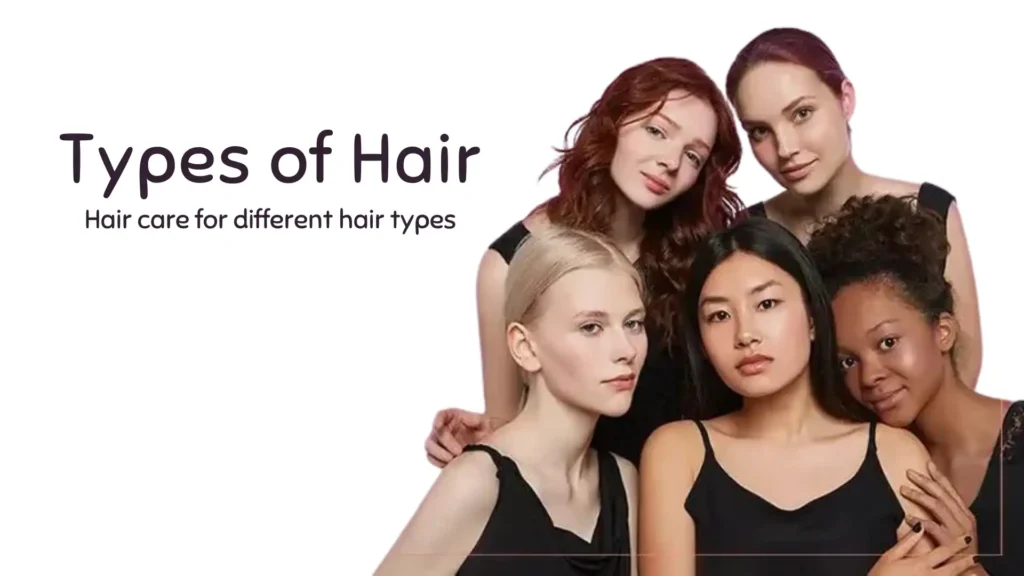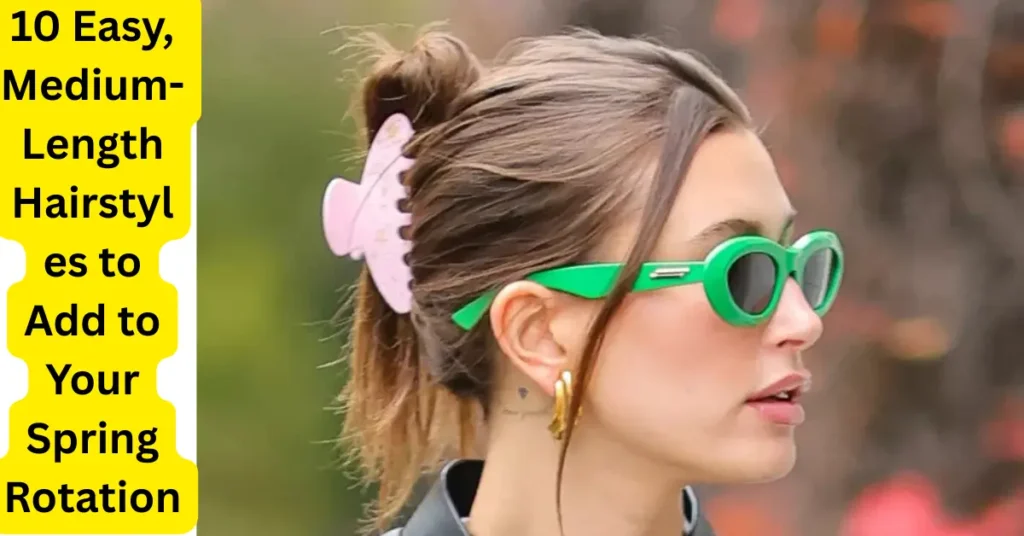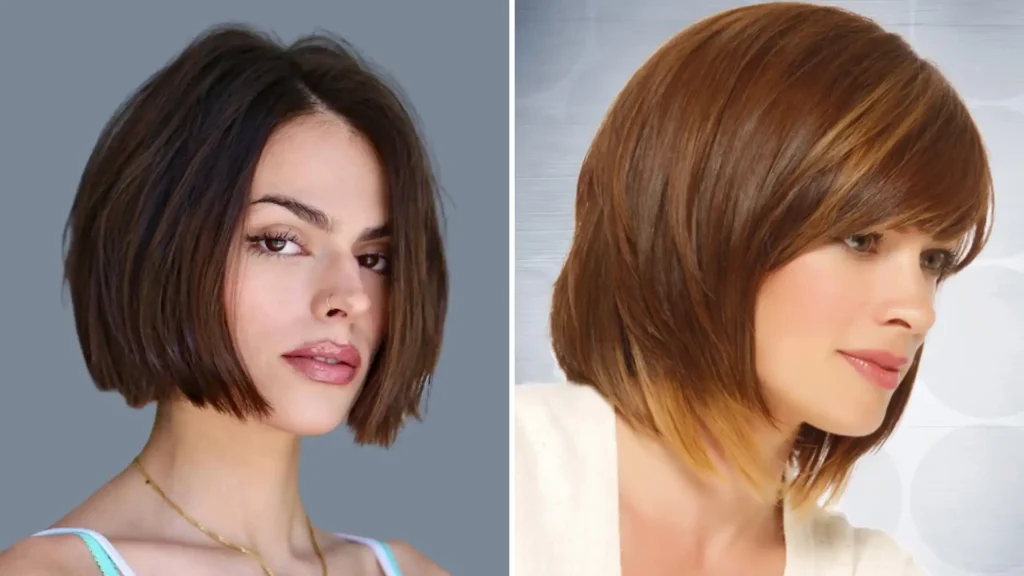Understanding your hair type is the first step towards achieving the healthy, beautiful hair you’ve always wanted. Hair care isn’t one-size-fits-all; different hair types require unique approaches to styling, moisturizing, and maintenance. In this comprehensive guide, we’ll delve into the intricacies of various hair types and provide practical tips for caring for each one. Whether you have straight, wavy, curly, or coily hair, you’ll find valuable insights to help you embrace your natural texture and keep your hair looking its best. hair care for different hair types
What Determines Hair Type?
Hair Follicle Shape
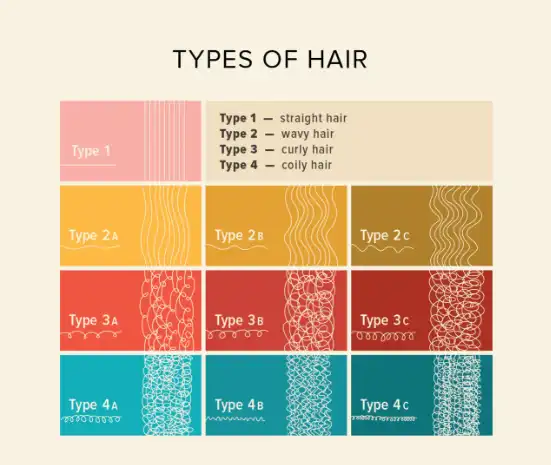
The shape of your hair follicle plays a significant role in determining your hair type. Hair follicles can be round, oval, or asymmetrical. Round follicles produce straight hair, while oval and asymmetrical follicles create wavy, curly, or coily hair. The degree of curl in your hair increases with the asymmetry of the follicle.
Genetic Factors

Your hair type is largely determined by your genetics. The characteristics of your hair are encoded in your DNA, which means they are passed down from your parents. While you can temporarily alter your hair’s appearance with heat or chemical treatments, your natural hair type will always return as your hair grows.
Identifying Your Hair Type
Type 1: Straight Hair
Characteristics of Type 1 Hair
Straight hair has no natural curl pattern and falls smoothly from root to tip. It can vary in texture, being fine, coarse, thick, or thin. This hair type tends to be shiny because the natural oils from the scalp can easily travel down the hair shaft.
Care Tips for Type 1 Hair
- Managing Oiliness: Straight hair can become oily quickly. To avoid this, wash your hair with a gentle shampoo and use a lightweight conditioner.
- Recommended Products: Opt for texture sprays and dry shampoos to add volume without weighing your hair down. Avoid heavy serums or butters, which can make your hair look greasy.
- Avoid Over-Washing: Washing your hair too frequently can strip it of natural oils, causing your scalp to overproduce oil. Dry shampoo is a great alternative for in-between washes. hair care for different hair types
Type 2: Wavy Hair
2A
2A hair has a gentle, tousled texture with loose waves from the mid-lengths to the ends. The roots are generally straight.
- Care Tips: Avoid oil-based or creamy products that can weigh down your waves. Instead, use light mousse or gel to enhance your natural wave pattern.
Type 2B
Type 2B hair forms more defined S-shaped waves from the midpoint to the ends. It is often thicker and can hold styles well.
- Styling Tips: Type 2B hair is ideal for the beachy wave look. Use a salt spray to add texture and definition. This hair type works well with balayage techniques due to its natural dimension.
Type 2C
Type 2C hair features well-defined waves that start at the roots. This hair type is prone to frizz, especially in humid conditions.
- Managing Frizz: Use a diffuser attachment on your blow dryer and anti-humidity products to minimize frizz. Lightweight mousses with moisturizing ingredients can also help maintain the shape of your waves.
Type 3: Curly Hair
3A
3A hair forms loose, S-shaped curls with a wide circumference. These curls are voluminous and can become frizzy if not properly cared for.
- Care Tips: Avoid brushing dry curls to prevent frizz. Use products that define and moisturize curls, such as curl creams and leave-in conditioners.
Type 3B
Type 3B hair has tighter curls with a circumference similar to a Sharpie marker. These curls are springy and full of volume.
- Moisture Needs: Type 3B curls require regular hydration to maintain their shape and prevent frizz. Avoid products with silicone and sulfates, which can dry out your hair over time.
Type 3C
Type 3C hair features tight, corkscrew curls that coil perfectly around a drinking straw. These curls need careful handling to avoid frizz and breakage.
- Styling Tips: Use a leave-in conditioner and finger comb wet hair to maintain curl definition. Air-drying is preferable to blow-drying to preserve moisture and reduce frizz.
Type 4: Coily Hair
4A
4A hair has S-shaped coils that are tightly wound and springy. This hair type is the most delicate and requires intensive moisture.
- Moisture Needs: Use deep conditioning masques, butters, and creams to keep your coils hydrated. Avoid using heavy oils that can weigh down your hair.
Type 4B
Type 4B hair forms zig-zag curls with a less defined pattern. This hair type can shrink significantly when dry.
- Defining Curls: The shingling method works well for defining Type 4B curls. Apply a generous amount of leave-in conditioner to wet hair, then work curl cream or gel down the length of each curl.
Type 4C
Type 4C hair has the tightest curls and is the most fragile. It requires careful handling and frequent conditioning.
- Care Tips: Avoid combing dry hair to prevent breakage. Use rich conditioners and coconut oil or shea butter to keep your hair moisturized. Co-washing (using conditioner instead of shampoo) can help maintain moisture levels.
Factors Affecting Hair Care
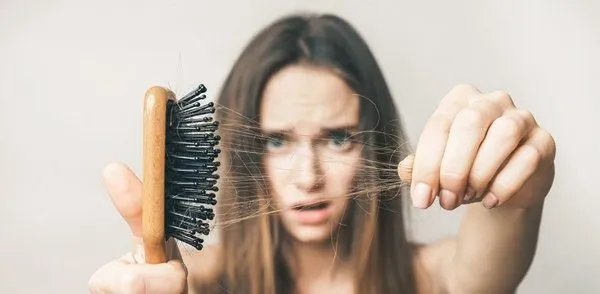
Porosity
Porosity refers to your hair’s ability to absorb moisture. It can be high, normal, or low, affecting how well your hair holds onto moisture.
High Porosity
Highly porous hair has gaps in the cuticle, making it prone to frizz and dryness but also quick to absorb products.
- Care Tips: Use moisturizing products like leave-in conditioners and rich butters. Avoid excessive heat styling and chemical treatments that can further damage the cuticle.
Low Porosity
Low porosity hair has a tightly closed cuticle, making it resistant to moisture absorption.
- Care Tips: Use lighter products like hair milks and mousses. Clarifying shampoos can help remove product buildup. Applying heat during conditioning can help open the cuticle and allow moisture to penetrate.
Density
Density refers to the number of hair strands on your head. It can be high, medium, or low, influencing how you should care for and style your hair.
High Density
High-density hair appears thick and full, but it can be challenging to manage.
- Care Tips: Use thicker creams and butters to add shine and control. Regular trims can help maintain shape and prevent split ends.
Low Density
Low-density hair appears thin and can be prone to looking flat.
- Care Tips: Use lightweight products that add volume and texture. Avoid heavy conditioners that can weigh down your hair. Texturizing sprays and mousses are excellent for creating lift and body.
Styling Tips for Different Hair Types
Straight Hair Styles

- Popular Styles: Chin-length blunt cuts and layered looks work well with straight hair. These styles add dimension and movement without compromising the hair’s natural sleekness.
- Styling Tips: Use flat irons or curling wands to add variety. Texture sprays can create a tousled, voluminous look.
Wavy Hair Styles
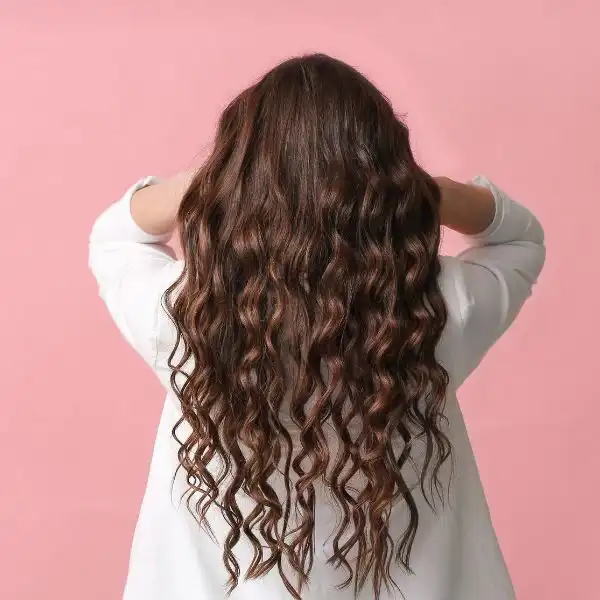
- Enhancing Waves: Embrace your natural texture with beachy waves or boho braids. Balayage highlights can add depth and dimension.
- Styling Tips: Use salt sprays and diffusers to enhance wave patterns. Avoid heavy products that can weigh down your waves.
Curly Hair Styles
- Defining Curls: Avoid tight ponytails that can stretch and damage curls. Opt for styles that showcase your natural curl pattern.
- Styling Tips: Use curl creams and gels to define curls. Air-drying and diffusing are preferable to minimize frizz and maintain curl integrity.
Coily Hair Styles
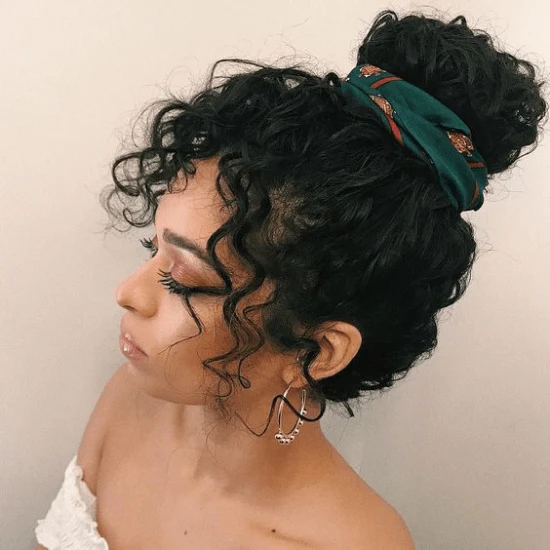
- Protective Styles: While some protective styles can help reduce breakage, avoid keeping them in for too long. Loose, hydrated styles are best for maintaining hair health.
- Styling Tips: Experiment with twist-outs, braid-outs, and natural updos. Always keep your hair moisturized to prevent breakage and maintain curl definition.
Conclusion
Understanding your hair type is essential for choosing the right products and techniques to care for your hair. Each hair type has unique needs, and embracing these differences is key to maintaining healthy, beautiful hair. Whether your hair is straight, wavy, curly, or coily, the right care routine can help you achieve your best hair yet.
Frequently Asked Questions
How can I determine my hair type?
To determine your hair type, examine your hair’s curl pattern when it is clean and air-dried. Consider the shape and size of your curls or waves and compare them to the descriptions provided in this guide. hair care for different hair types
What are the best products for curly hair?
Curly hair benefits from moisture-rich products like curl creams, leave-in conditioners, and gels. Avoid products with sulfates and silicones, as they can strip moisture and cause buildup.
How often should I wash my hair based on its type?
The frequency of washing depends on your hair type and its oil production. Straight hair may need more frequent washing, while curly and coily hair types can benefit from less frequent washing to preserve natural oils.
What should I avoid to prevent hair damage?
To prevent hair damage, avoid excessive heat styling, harsh chemical treatments, and tight hairstyles that can cause breakage. Always use heat protectants when styling and opt for gentle, sulfate-free shampoos. hair care for different hair types
Additional Resources
- Genetic Factors and Hair Type
- 9 Tricks for Healthier, Fuller-Looking Hair
- American Academy of Dermatology on Hair Care
By understanding your hair type and following the appropriate care tips, you can achieve and maintain beautiful, healthy hair. Embrace your natural texture and experiment with styles that make you feel confident and beautiful.
Discover more hair trends:
- The Top Blow Dryer Brushes of 2024
- WHAT IS A BUTTERFLY HAIRCUT? TIKTOK’S VIRAL HAIRCUT TREND
- Warm and Buttery Hair Color Trends Dominate 2024’s Best Looks
- Follow us on Facebook
- Follow us on Pinterest

